
Bird’s Eye
Build the best ecosystem in Bird’s Eye — a singleplayer engine-building card game.
A relaxing and family-friendly experience
Bird’s Eye is a relaxing game that features no direct combat, no violence and no strong language. It doesn’t require quick reaction or thinking, it invites you to take your time.
Influence your opponents indirectly
While the game has no direct ways to harm your opponent, you can play a card in their ecosystem, as well as yours. Thwart their plans, while risking giving them a edge.
A chance to learn
Bird’s Eye was built to be more than just a fun game, but an educational experience as well. The game mechanics are designed to closely resemble a self-regulating ecosystem, so the player can learn general ecological concepts in a fun and engaging way. The game has also features an encyclopedia where you can learn about the cards (as well as unlock new ones).
Modding support
Bird’s Eye was built from the ground up to be as modding-friendly as possible. It’s easy to create, share and use community-created cards and game modes with built-in tools and mod manager. Combine different card packs. Pick and choose different parts of the mods you install. Tailor the game experience just to you.
Read More: Best Card Battler Card Game Games.

Roman Wars: Deck Building Game
In “Roman Wars” we fused elements of deck building board game and strategy together. Build your deck, upgrade your cards, develop your base, and fight different enemies. Try various missions, use bonus cards, and don’t forget about cats!
Features
-
Ten different missions: Build your deck of cards and meet multiple criteria to complete the missions
-
Ten different enemies: Suppress a riot, make a sortie, fight the enemy stealing your gold and other enemies
-
Bonus Cards: Earn experience points and unlock special Bonus Cards which make the missions much easier
-
Themes: Choose between the classic Roman theme and Cats theme
Demo
Check out the demo and play first two missions of the game
Read More: Best Card Battler Deckbuilding Games.

Wardens
After having played this game extensively since I acquired it, I am posting this review in the hopes of addressing the points made in the negative review above, as the reviewer clearly does not understand the purpose of this game. This is going to be somewhat lengthy, will try to summarize at the top.
TLDR; Pro’s and con’s below. If you came here expecting standalone chess look elsewhere, if you are interested in a sandbox experience where you can create your own units read on.
First and foremost I would like to point out something that I believe is the reason for said reviewers negative perception of this game, and that is that Wardens is NOT chess. If you go into Wardens expecting standalone chess, you will be disappointed. At present the only resemblance this game has to chess is the movement and arrangement of the pieces (for now), and that it is played on a chess board. However, despite one of the default game types being Capture the King, Wardens lacks practically all other basic chess rules, such as en passante, castling, and most importantly, check. As your goal in the aforementioned game mode is to KILL the king, not checkmate him. This was done so as to introduce the concept of the abilities in a familiar way without overwhelming the player. As for the abilities being boring, I admit that I myself do not care for the starting decks. That is because those decks are more useful as templates, to showcase possible abilities and help you to make your own. So the abilities are only as boring as you make them. Granted the amount of things you can do at the moment is a bit limited, but there is a surprising amount of versatility with what is already there. With the tools currently available, I have created over 4 pages worth of cards, with varied abilities including, but not limited to, things such as a unit that when they have sufficient mana they and surrounding allies cannot be frozen, a unit that has an ability that grants permanent attack immunity until next overtake (akin to stealth), and a unit that allows allies to cast their abilities for free provided they have sufficient mana for said ability, although this requires (for now) compatibility to be integrated into the other units in order to work, as does my most recent unit, which will allow nearby allies to cast their abilities for 3 mana less. The list goes on, and it will only improve with time as more things become available.
– Real player with 74.6 hrs in game
Read More: Best Card Battler Magic Games.
As a chess player, this looked interesting, but I can’t recommend it. It’s basically just chess, but the pieces have boring abilities, their movement is unchanged. Board readability is terrible, all the pieces (both yours and your opponent’s) look too similar and so everything blends together until you can’t figure out what is happening anymore. There’s no tutorial, and the AI you can play against is terrible, if you’re decent at chess you will easily crush it.
– Real player with 0.8 hrs in game

中外名将对决
The game is unpolished and way too short for the asking price. The English translation is perfect.
– Real player with 0.9 hrs in game

Blood Card 2: Dark Mist
I planned to give Red Mist two hours of stream time and ended up continuing on for five and a half. Then I clocked another ten hours off stream. If you still need to hear more, watch my gameplay footage or read on below.
https://www.youtube.com/watch?v=0MYIZPQJEs8
You build your deck, and your cards are your life. Enemies will steal them from you as they damage you, and you’ll face three or four foes at once with more waiting in the wings. If you’re a casual player, you’ll love this like I did. If this isn’t your first rodeo, then you’ll find each character (deck archetype) has a few ways to create an infinite loop. But even the infinite loop isn’t a guarantee of victory: the real trick is understanding the effects enemies will have on you.
– Real player with 290.8 hrs in game
3.9/5 (B plus) : Good card battler with a unique mechanism (cards as life points) and interestingly different characters. Art is good enough. Weaknesses are mostly in the lack of advancement. The difficulty levels add no new fun or functionality, just increase the difficulty, which does increase the challenge with each successful replay, but almost nothing else.
A very good element of the game design is similar to Slay the Spire, having very different play styles, cards, and mechanisms for the different characters. Really appreciate how different they are and there are six.
– Real player with 195.1 hrs in game

CABARET 4 CARD
This is the Grand Cabaret 4 Cards in Ginza.
An adult social gathering place where you can enjoy shows, drinks and card games. [/]
Only 4 “logical battles” [/]
Only 4 cards in your hand. It will be distributed randomly, but it will be all open from the beginning.
There is no luck factor after the hand is dealt.
It’s just four “logical battles” where you can win the game at once with one mistake.
Victory / defeat conditions change for each move [/]
“If you win, you win” “If you win, you lose” “If you win the last one, you win” …
The two players alternately put cards into play one by one.
A thrilling rule where victory / defeat conditions are constantly changing.

Card City Nights
If you enjoy an easy-going yet skill-based game, or if you enjoy the elements of both puzzles and trading card battles, I highly recommend ‘Card City Nights.’
In ‘Card City Nights’, you fast travel through an island city with a chill, evening atmosphere, talking to comical NPCs, and battling them in a TCG for booster packs. In the card game proper, each player has a 3x3 card grid, and seven Defense Points. The goal is either to fill up your opponent’s grid with occupied space, or decrease their Defense Points to zero.
– Real player with 23.6 hrs in game
(Need a tl;dr? Just go buy the freaking game.)
I would like to start out by saying that I have a lot of experience with TCG’s. I played Magic: The Gathering for a while, and I liked it but I was never in love with it. The game that I really fell in love with was Yugioh- which, from about 2010 to early 2012, was the best card game of all time, no holds barred, perfect pacing, for most of those formats well balanced, all playstyles were represented, and most importantly a deep, deep, deep, DEEP card pool that constantly rewarded me for scrolling through lists of cards, pointing at a random one with weird subtext and saying “I’m gonna make a deck around that one!” But eventually, konami ruined everything, the game sped up until it was too fast, the power crept up until I couldn’t build a creative deck and survive against anyone competent for more than a turn or two, and the community got even worse. The state that it was in was much akin to the happy accidents of “Super Smash Bros. Melee” or “Marvel vs. Capcom 2” in that they probably didn’t actually think about how the things they added affected the meta game, but eventually it somehow turned out fantastic. I’m saying all of this because Card City Nights reminds me of this era of yugioh. Very different gameplay, yes, but I’m not talking about the gameplay. There are two very important things that this game gets very right and other digital tcg’s get very very wrong: card collection and deck building.
– Real player with 21.5 hrs in game

Nadir - Prologue: Slay the Six
Nadir - the point on the celestial sphere directly below an observer. It’s the direct opposite of the zenith… and your destination.
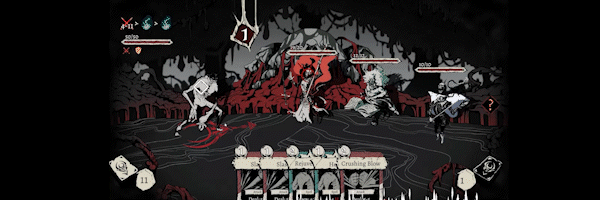
GAME DESCRIPTION: 🔥
Nadir - Prologue: Slay the Six is a free prologue to the dark deckbuilding roguelike adventure, with its artwork burning of infernal fire, and many extraordinary inspirations, the deepest of them coming straight from Dante’s Divine Comedy.
Control powerful, yet extremely blemished teams of characters, each representing one of the deadly sins. Fight using a plethora of unholy cards and try to escape the seemingly endless, multi-layered city.
TWIST ON A TURN SYSTEM 🔥
The Threat Counter shows how powerful the enemy’s attacks will become. There is no limit of played cards, but each of them adds points to the Threat Counter, so you’ll have to manage your risk-taking.
CHARACTER-BASED DECK BUILDING 🔥
Each character on your team contributes to your main deck; find synergies between each Sinner’s cards and build a dream (or nightmare) team.
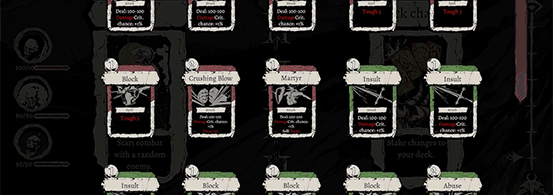
CONTROL YOUR SINS 🔥
Every Sin has its own group of Sinners, shells that will bring its will to Nadir. As the sinners’ journey progresses, their power will grow, unlocking new abilities to fight even stronger threats. And if they shall fall, the abyss will produce more fools to try.
CHOOSE YOUR OWN APPROACH 🔥
Do you prefer raw damage or a more cunning way of poison? There is a multitude of different card effects to choose from. But remember that the enemy will attack you back, so you better look for cards that will decrease the Threat Counter.
CHALLENGING BOSSES 🔥
Each level of Nadir has its own Floor Guardian that you will have to defeat in order to go deeper into the city. But be careful, each of them has a unique ability!
REACH THE BOTTOM OF NADIR 🔥
This goal seems simple, but considering the characteristics of Sins, will they be able to divide the power between them?
A JOURNEY UNLIKE ANY OTHER 🔥
Watch your back on your way to the bottom of Nadir, taking time to admire its horrific look. It might feel familiar – from the wonders of the Divine Comedy, to desaturated aesthetics of Sin City, to the unforgettable design of Hellboy – yet not comfortable at all.
MODDING SUPPORT 🛠️
Devil’s in the detail and that’s why Nadir offers a built-in, extensive modding support for those who want to expand the world of Nadir and imprint their twisted fantasies onto every inch of the game.
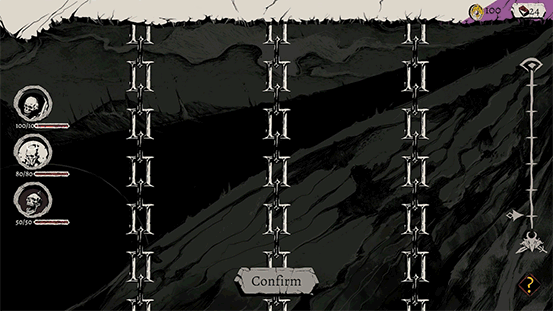

Oaken
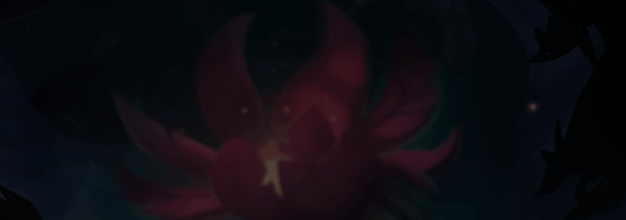

The world of Oaken is a mythical place, existing in a not easily defined space and time. It is stretched among the branches of the Great Oak. Its inhabitants are spirits which listen to the same voice, called the Oak Song.
The loss of that voice strats a series of events leading into a struggle which may either heal or destroy the Great Oak.
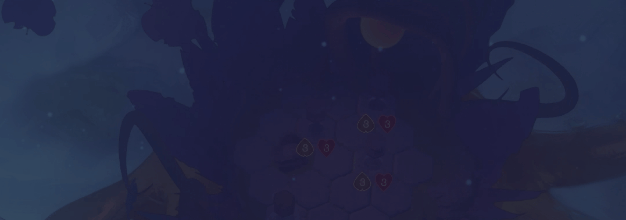

-
Roguelike, hero-oriented campaign with deck management.
-
A mystical world inhabited by spirits with celtic and tribal vibes.
-
A randomly generated world map with tons of levels, bosses and events to be discovered.
-
Unique, highly tactical battles on a hexagonal grid, where position and rotation is everything.
-
Upgrade your spells and spirits the way you want.
-
Easy to learn, hard to master - chill and challenge modes suitable for any player.


Ascension: Deckbuilding Game
TLDR; The game is well worth the $10 at full price, let alone sale price, even though there are a few minor inconveniences.
I’m a huge card game fan. Magic the Gathering, Dominion, Cards Against Humanity, etc. If it has cards, I generally love it. This game is no exception, and stands out in a couple ways over similair card based games that you can get on the PC. Compared to, oh say Magic the Gathering, the file size and resources required to run this game are miniscule. I often have my 12 gigs of ram stretched pretty thin, but never once has the game caused an issue with anything else running or been too much of a burden on system resources.
– Real player with 500.9 hrs in game
My favorite deck-building game
Ascension is a very good video game adaptation of one of the best tabletop competitive deck-building games, Ascension: Chronicles of the Godslayer. One player (with AI players) to four players can play locally (hot seat) or online (you must register for a free Asmodee online account), which allows cross-platform play (between Steam and various smartphone implementations).
The game
You start with the now-standard deck-builder set-up - 10 cards - and you draw back up to five cards at the end of each turn. Cards in the base game can be heroes (played once and discarded), constructs (semi-permanent), and monsters (defeat for points). Heroes and constructs generate two of the resources in the game: Runes (money for purchasing cards) and/or Power (fighting strength). Defeated monsters award you Honor (victory) points. You play cards on your turn, which generate Runes and/or Power, and you spend those to acquire or defeat cards that have been dealt from the shuffled “Portal Deck.” In addition to the minimum-six cards in the Portal Deck, there are always at least three other cards available on the side: two inexpensive heroes to buy, and one monster to fight. Heroes and constructs are worth some amount of Honor, while defeating monsters draws Honor points from the Honor pool. The Honor pool works as a timer for the game: at the start of the game, Honor is placed in the pool, and the final round completes when the last Honor points are drawn from the pool. Then the value of the heroes and constructs is added to the Honor points, and the player with the highest total wins.
– Real player with 405.7 hrs in game